Waste-to-energy power generation produces clean energy from garbage. But that is not its only contribution to decarbonization. One Japanese company with the technology to change garbage into a useful resource is now helping to drive an energy transition in Asia through its commitment and conviction.
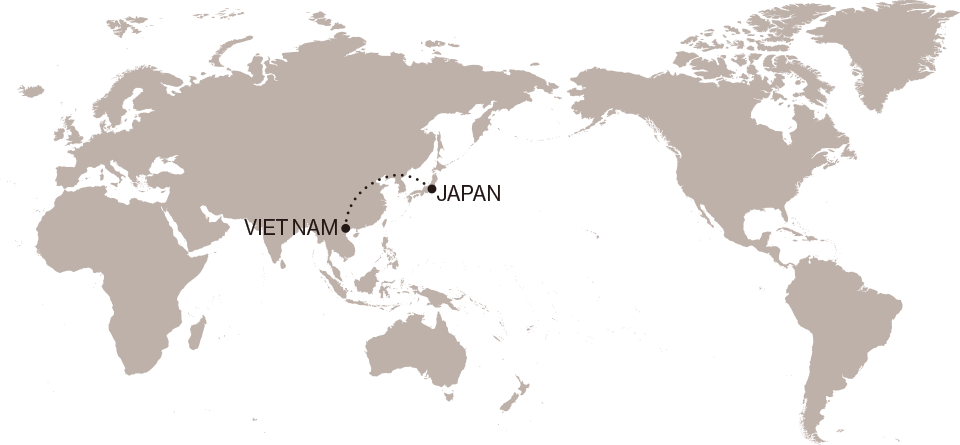
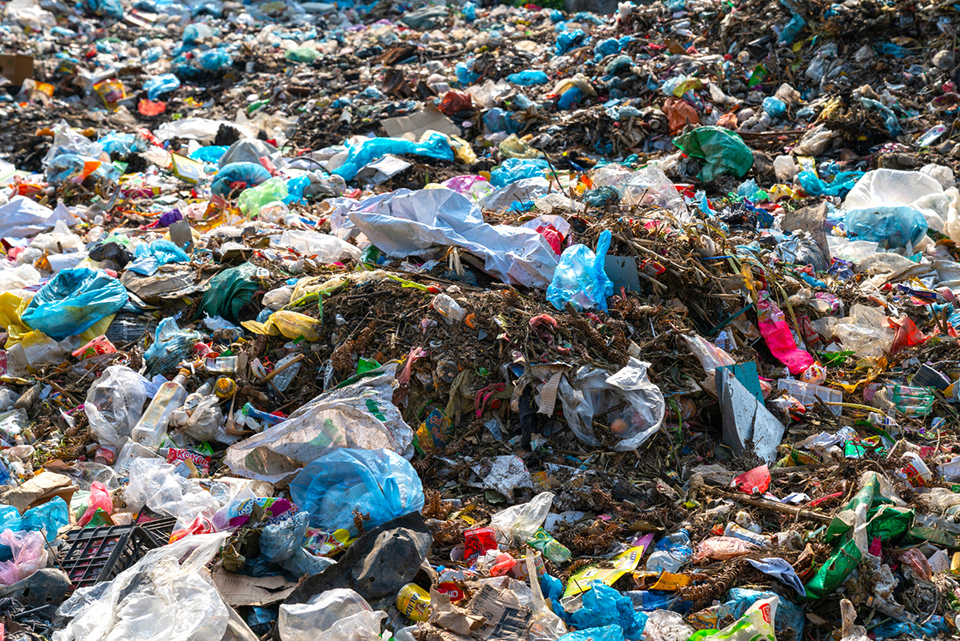
Viet Nam and other Asian countries have been unable to keep up with and dispose of the rapidly increasing amount of garbage that continues to be deposited into landfills. In addition to producing foul odors and soil contamination, landfills emit methane, causing a serious environmental problem. VINHDAV/ISTOCK
In October 2021, Prime Minister KISHIDA Fumio spelled out Japan’s approach to comprehensively supporting the decarbonization transition of developing countries through the “ASEAN-Japan Climate Change Action Agenda 2.0.” The Joint Crediting Mechanism (JCM), established in 2013, is a mechanism for facilitating cooperation between Japan and developing countries toward reducing greenhouse gas emissions, in which the results of the reductions are assessed as contributions by both the partner country and Japan. The JCM backs Japanese companies in their efforts to offer advanced decarbonizing technologies, products, systems, services, and infrastructure to those partner countries.
One example of the JCM in action is the construction of a new major waste-to-energy power project in Viet Nam. Waste-to-energy involves the burning of garbage to produce the heat to spin power turbines; it is thus a type of biomass power generation, and the resulting energy is classified as renewable. Japanese companies are known as global leaders in the field due to their technological prowess. One of those, JFE Engineering Corporation, has received financial support for JCM Model Projects to construct a waste-to-energy power plant in the Vietnamese province of Bac Ninh, working with a major local recycling enterprise. The plant, slated for completion in January 2024, will treat 500 tons of general and industrial waste per day from three of the eight districts in the province. The estimated 91,872 MWh of clean energy produced from the plant annually will be sold to a public corporation to supply electricity.
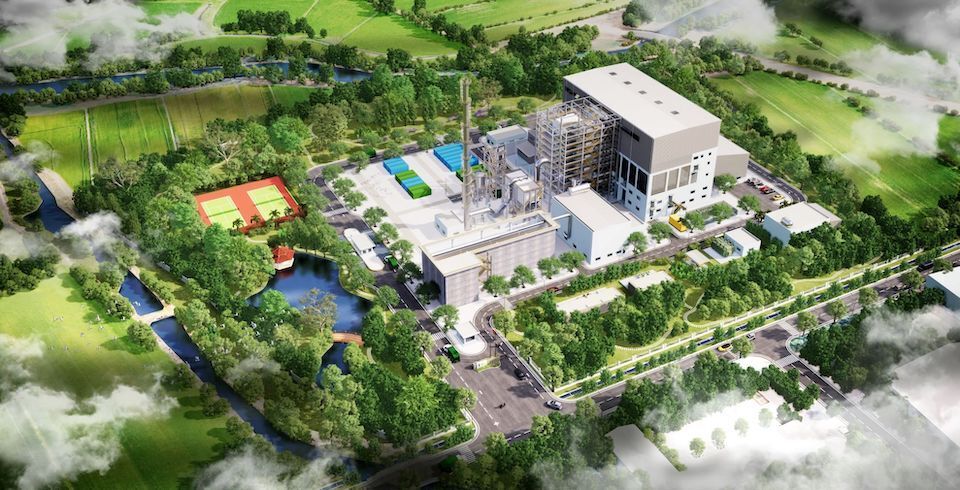
A conceptual illustration of how the waste-to-energy plant, currently under construction in Bac Ninh Province, Viet Nam, will look once it is completed. The region, with a population of about 1.4 million people, lies just east of the national capital of Hanoi, and has 16 industrial parks.
Waste-to-energy power contributes to the environment in other ways as well. In many Asian countries, much garbage—the total amount of which is increasing rapidly due to economic development—ends up being buried in landfills, causing such problems as water pollution and foul odors. Of even greater concern is the fact that the landfills emit methane, a greenhouse gas that is 28 times as powerful as carbon dioxide (according to the IPCC’s Fifth Assessment Report). Waste-to-energy power generation enables the reduction of such methane gas emissions by reducing the amount of garbage going into landfills.
By generating power without the need for fossil fuels and through other means, the Vietnamese waste-to-energy project will achieve effective reductions in greenhouse gas emissions of around 600,000 tons (CO2 equivalent) over a 15-year period, according to projections. JFE Engineering will be involved in operating the plant after its completion, helping to encourage local communities to dispose of their waste and to recycle properly. HASEBA Hiroyuki, who is in charge of the project at the company, explains, “Through the JCM, the governments of Japan and Viet Nam have both been involved in the project, creating a stronger relationship with local businesses and providing the impetus to really move the project forward.”
While garbage is difficult to eliminate completely, it can be used effectively. Furthermore, waste-to-energy power generation is highly reliable as it is unaffected by weather conditions, unlike solar and wind power. It can continue incinerating waste and supplying electricity to communities even during disasters, and there have been cases in which waste-to-energy plants have even served as evacuation facilities in Japan. Haseba says, “Though people have a negative impression of garbage, once they realize that it can be converted into electricity and benefit the Earth, they will start to think more positively about waste and its disposal.” The technological development of waste-to-energy power generation is still in progress. Trash could be key to saving our planet.
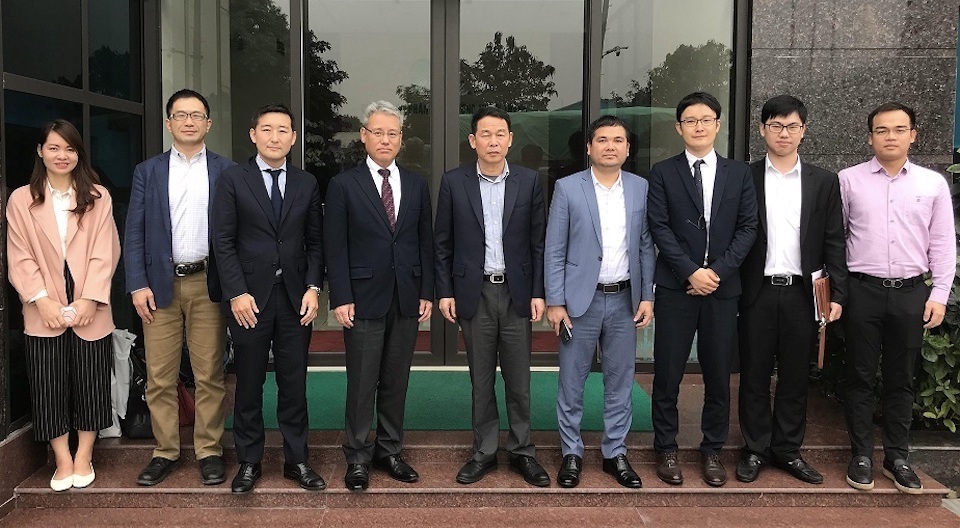
Members of the two companies in partnership, JFE Engineering Corporation and Thuan Thanh Environment JSC, the Vietnamese recycling enterprise. Fourth from left is HASEBA Hiroyuki, director of the Recycling Business Promotion Division of JFE Engineering’s Environmental Solutions Sector.
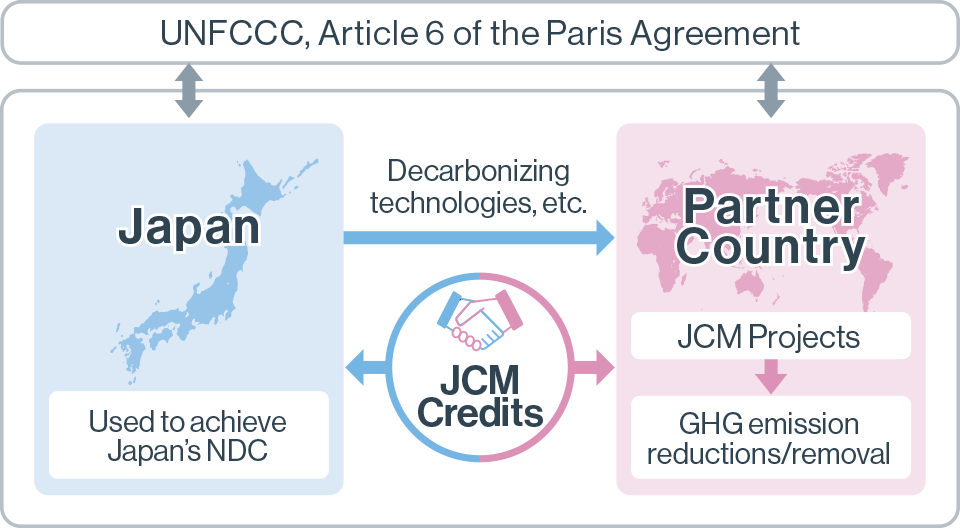
While contributing to global countermeasures against climate change by spreading decarbonization technologies to developing countries, Japan is making progress toward achieving its Nationally Determined Contribution (NDC) to the reduction of greenhouse gases under the Paris Agreement. As of July 2022, 17 countries have become partners in the Joint Crediting Mechanism (JCM).
Waste-to-energy Power Generation
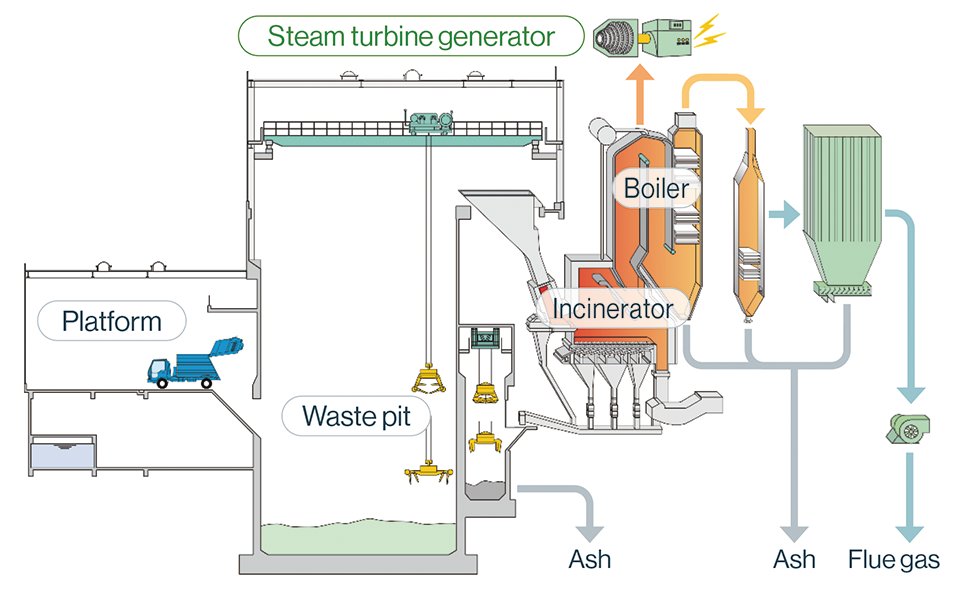
Previously, waste-to-energy power generation could only generate enough electricity for on-site consumption at incineration facilities, but technological developments such as major improvements in power generation efficiency have made it possible for most of the electricity generated in that way to be sold externally. JFE Engineering is working on further developments, including methods to utilize the carbon dioxide released by incinerators.






























